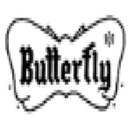[Decision on
Trademark rendered by the Korean Supreme Court on January 12, 2017]
1. Trademark Case
in Question
A Japanese
corporation ("A") owned the following mark which was well-known in Koreain relation to table tennis goods (the “Prior Used Mark”):

A Korean individual (“B”) registered the following mark which he
used in relation to the marketing of bags (the “Registered Mark”):
“A” filed a trial for invalidation of B’s
Registered Mark with the Korean Intellectual Trial Board (the “KIPT”) based on
Article 7(1)(xi) of the former Trademark Act which reads, in part, as follows:
Article 7(1) … a trademark falling under any of the following
subparagraphs shall be unregisterable:
(xi) Any trademark which is liable to
mislead or deceive consumers on the quality of goods.
2. KIPT (Case No.
2012 DANG 368)
The KIPT agreed with
A’s position and rendered a decision to invalidate the registration of the
Registered Mark on March 14, 2014. The grounds for the decision were as follows:
i) With
respect to whether the Prior Used Mark was well-recognized as
indicating the goods of a particular person by consumers within the Republic of
Korea, the KIPT held that the Prior Used Mark
was in fact sufficiently well-recognized domestically among traders and
consumers of table tennis goods at the time the Registered Mark was registered
on October 30, 1995.
ii) With respect to
the degree of similarity between the Registered Mark and the Prior Used Mark,
the KIPT found that the Registered Mark was sufficiently similar to
the Prior Used Mark.
iii) With
respect to the business connection between A and B’s respective designated
goods, the KIPT determined that the respective goods of A and B,
namely bags and table tennis goods shared economic relevance. Accordingly, by using the
Registered Mark on its bags, B misleads or deceives consumers.
3. Patent Court (Case
No. 2014 HEO 2535)
“B”filed an appeal of the KIPT’s decision with the Patent Court. The Patent Court rejected the
appeal on August 28, 2014. The grounds of the Patent Court's decision were similar to
those of the KIPT, as follows:
i)
The Patent Court accepted the KIPT’s first reason for
refuting B’s argument.
ii) With respect to
the similarity between the Registered Mark and the Prior Used Mark, the Patent
Court held that the Registered Mark can be abbreviated to "butterfly"
and is therefore similar to the Prior Used Mark in terms of sound and meaning,
iii) The Patent Court
accepted the KIPT’s third reason for refuting B’s argument.
4. Supreme Court
(Case No. 2014 HU 1921)
“B”filed another appeal, this time before the Supreme Court of Korea. The Supreme Court accepted the
appeal and overturned the case sending it back to the original court, the
Patent Court, on January 12, 2017. The grounds of the Supreme Court's decision were as follows:
i) The Supreme Court accepted the KIPT’s first reason for refuting
B’s argument.
ii) With respect to
the similarity between the Registered Mark and the Prior Used Mark, the Supreme
Court held that the Registered Mark is different from the Prior Mark in terms
of appearance.
iii) With respect to
the business connection between A and B’s respective designated goods, the
Supreme Court held that the connection was weak. In addition, the court found that “bags” were not similar to
“table tennis goods.”
Based on
these reasons, the Supreme Court concluded that by using the Registered Mark on
its bags, B was not misleading or deceiving consumers concerning the source of
the goods.
5.
Our Comments
In Korea,
it is difficult to invalidate a registered trademark based on the argument that
the mark is similar to another person’s trademark and is being registered in an
attempt to take advantage of the other trademark’s fame.
Instead,
we recommend that a trademark owner who possesses a well-recognized trademark files and register their trademark on designated goods that may be
susceptible to registration by another person seeking to imitate and take
advantage of the original trademark’s fame. This approach is more effective and
inexpensive approach.
Copyright ⓒ BOOK
CHON, 2017

